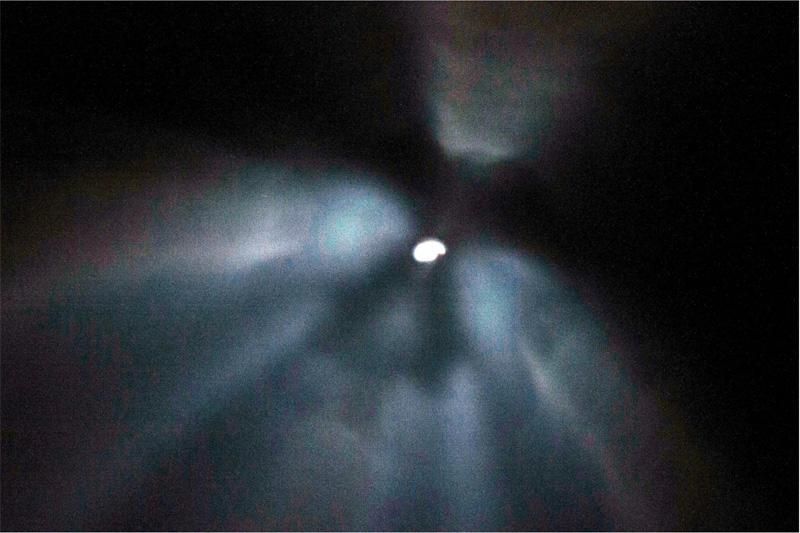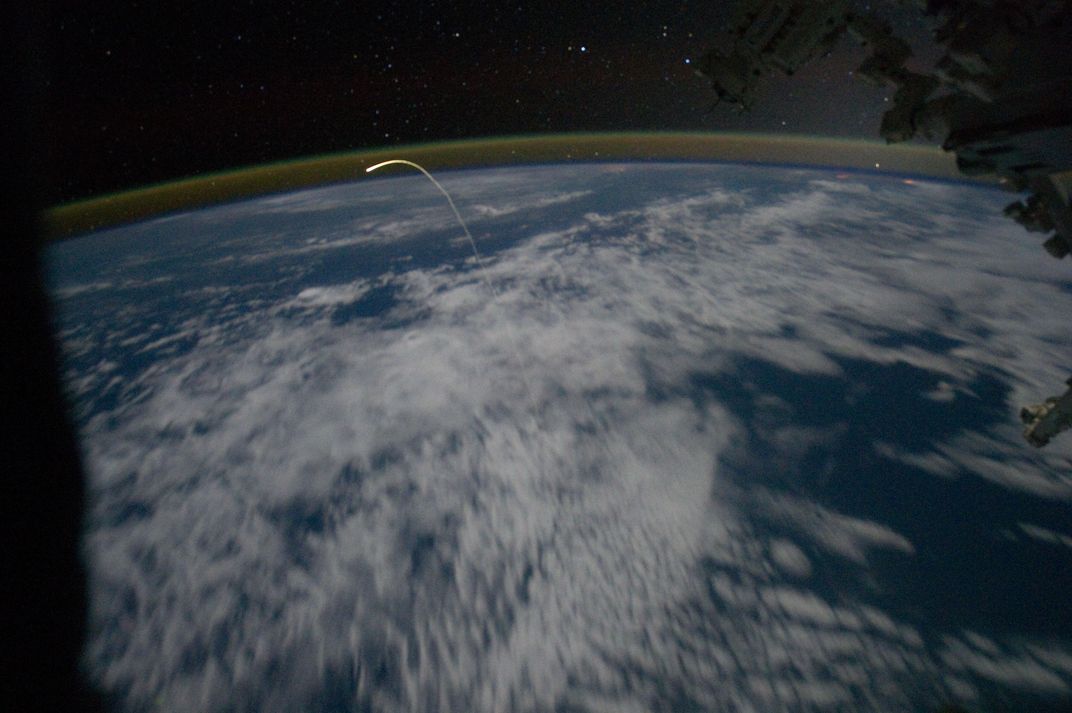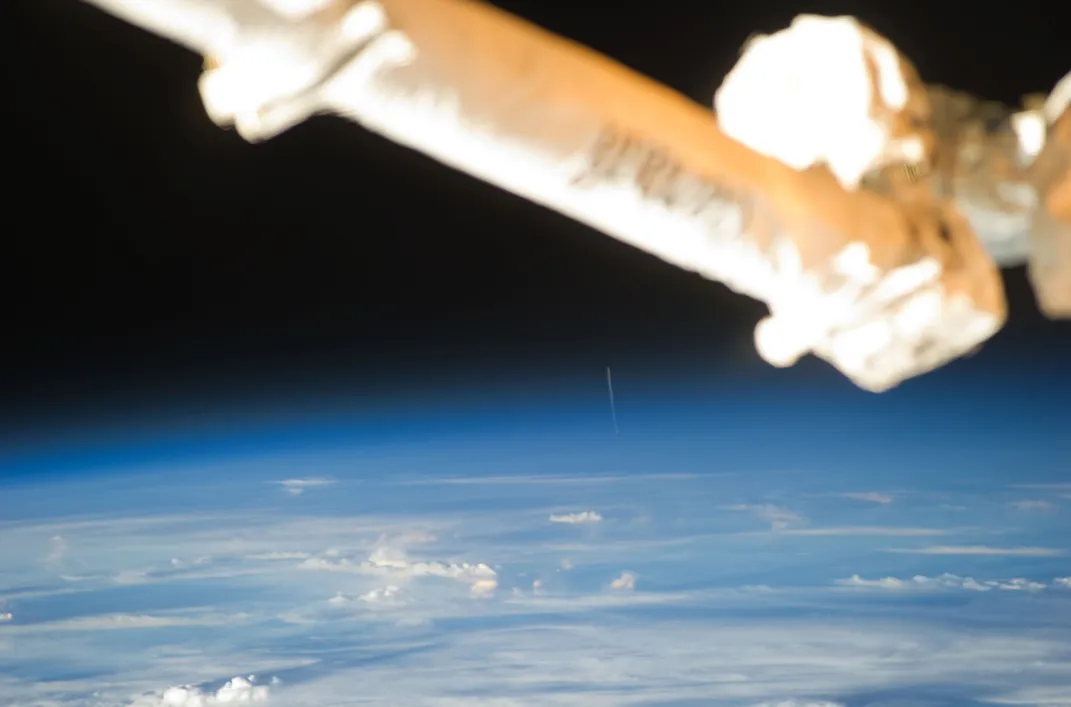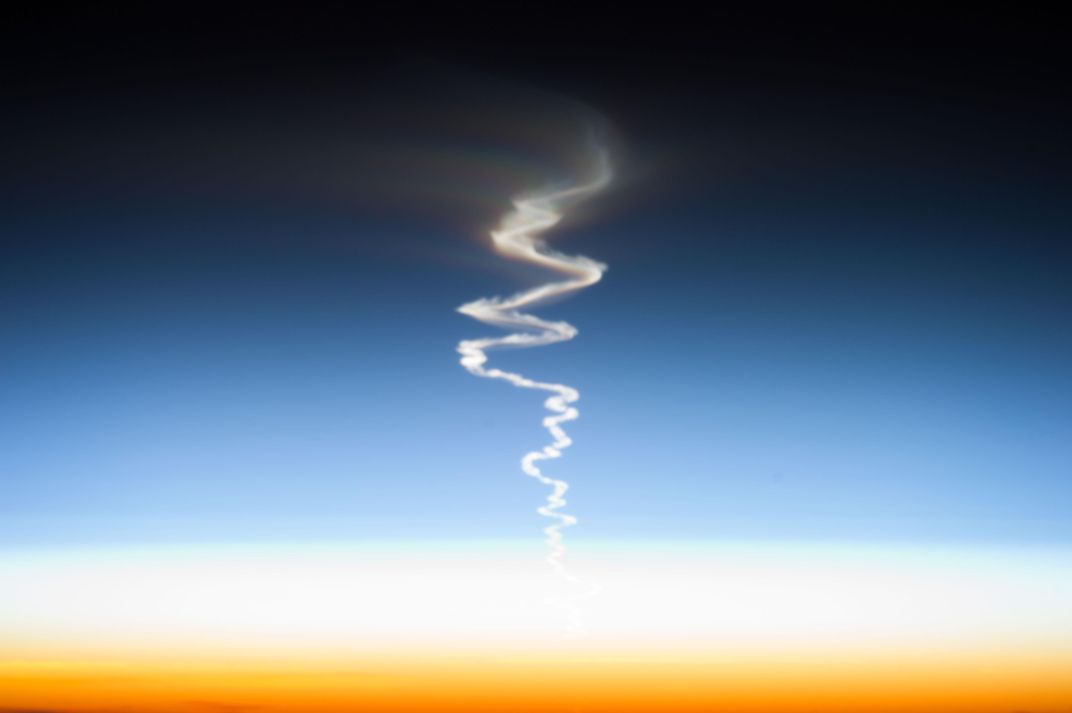Shots Seen ’Round the World
Lucky spectators on Earth and in orbit are sometimes treated to an unexpected show on launch day.
/https://tf-cmsv2-smithsonianmag-media.s3.amazonaws.com/filer/d4/86/d486acb3-1449-4347-8951-de03a9347adb/soyuz_launch_over_houses.png)
Rocket launches are spectacular sights from close up, with flames as bright as the sun and a thunderous roar that rattles the coins in your pocket. Even from miles away, a rocket racing across the sky can make the heart race, too. More distant viewers, though, usually see nothing but a small contrail or, at night, a nondescript point of light rising near the horizon.
But on rare occasions, when the viewer is in darkness and the rocket rises high enough over the horizon that its exhaust plume is illuminated by the twilight sun, a launch can be a glorious sight even for spectators hundreds of miles away.
The latest Soyuz launched from Kazakhstan, which carried three new crewmembers to the International Space Station on December 15, offered such a spectacle. Although blastoff was shortly before sunset, viewers in southwest Siberia, to the east of the launch site, were already in evening darkness. For thousands of people in these heavily populated regions, and for air travelers flying above them, the rocket’s plume glowed in the starry sky like a heavenly light saber.
Meanwhile, 250 miles overhead, the space station was passing close enough to the launch site to see the rocket climbing out. That proximity is the result of a relatively new (since 2013) Soyuz launch profile that gets the cosmonauts to the station in hours instead of days. Alerted to be on the lookout, station commander Scott Kelly, floating in the multi-windowed cupola viewing module, spotted the rocket early. He fired off a series of images and quickly tweeted one down to Earth.
#Soyuz blasts through the atmosphere on its way to @Space_Station! #SoyuzTMA19M #soyuzlaunch #YearInSpace pic.twitter.com/mtulhiyiEd
— Scott Kelly (@StationCDRKelly) December 15, 2015
Kelly’s photos covered the seven-minute period from just after the rocket jettisoned the four strap-on segments of its first stage, to shortly after the crew inside their Soyuz TMA-19M spacecraft separated from the spent third stage. The sequence of pictures, with their backlit clouds against a black sky, show the weird splay of separate engine nozzle plumes, the abrupt cutoff of the second stage, and immediately following that, ignition of the last stage, followed by its abrupt shutdown.
This was followed a few seconds later by the appearance of an expanding cloud that looked, mysteriously, like a fat comma.

Viewers on the ground also were taking pictures and videos, dozens of which started appearing on Internet sites such as YouTube and Rutube. Many were taken with quickly-grabbed pocketcams that bounced and zoomed in and out of focus, while others were from automobile-mounted “dashcams.” A very few, in the Omsk and Novokuznetsk areas and in far northeastern Kazakhstan, were taken by experienced amateurs who likely were awaiting the scheduled launch. With their tripod mounts and stable zooms, they produced images of extraordinary detail as the rocket flew nearly directly overhead.
This video, posted by “Aleksey” in Novokuznetsk, shows the third stage shutdown followed by formation and dissipation of the “comma cloud.”
Roman Smirnov in Novokuznetsk posted this video showing the third stage shutdown and Soyuz separation (starting around the 2:10 mark).
Yuri Boldenkov captured this view from Ridder, Kazakhstan:
After comparing their pictures with Kelly’s, and examining earlier launch photos taken from the space station and other images, the mystery of the “comma cloud” gets less mysterious. It wasn’t a rocket burn at all, but the planned venting of residual liquid oxygen from the third stage to steer it clear of the Soyuz. It’s yet another example of how these pictures, aside from being pretty, can be useful. They can document launches in a way that was impossible before cell phones, YouTube, and high-resolution cameras in orbit.



/https://tf-cmsv2-smithsonianmag-media.s3.amazonaws.com/filer/38/02/38024b1d-7ebb-4ac6-af49-82281d6928e5/iss039-e-005434.jpg)



/https://tf-cmsv2-smithsonianmag-media.s3.amazonaws.com/filer/89/01/8901a76d-f74f-4cab-8a76-a12026b70079/iss037e009301.jpg)